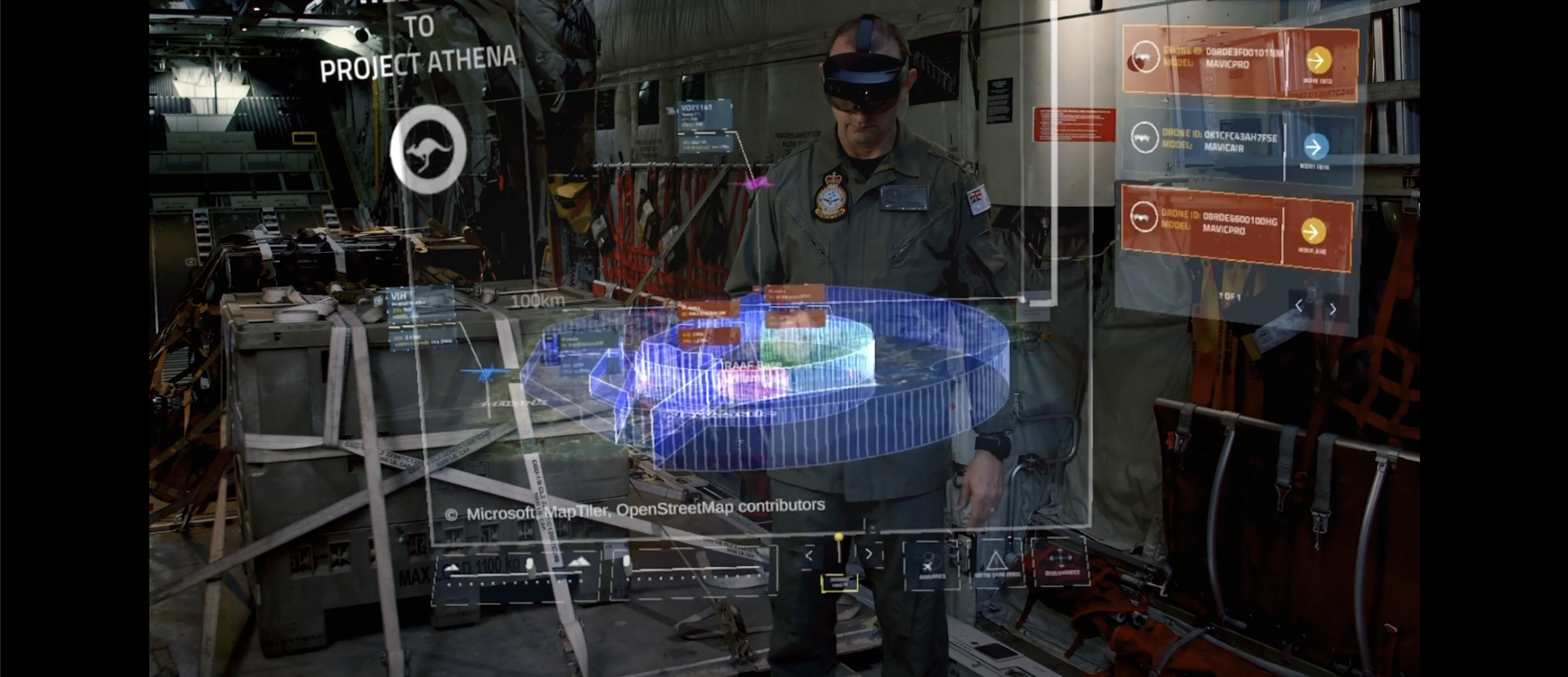RAAF Athena | Hololens
A proof of concept designed to test the feasibility of a mixed reality (XR) solution, namely the Hololens 2 to visualise data in a virtual operations room.
Role
UI Designer
UX Research support
Team
Karlo Ticsay
+
1 x Lead Designer
2 x Developers
Duration
Discovery Phase (4 weeks)
Delivery Phase (12+ weeks)

01. Overview
The increasing availability and popularity of consumer-grade drones escalated the risk of aircraft collision and the security threat for airports and bases around Australia.
The goal is to enable humans to see further, faster, and clearer from distributed locations using mixed reality technologies to enhance situational awareness, decision-making and “separate” drones from inbound and outbound aircraft, be alerted of drones within a certain radius and locate drone operators to take necessary actions.
02. Problem
The challenge was to integrate various data such as drone tracking, sensor networks, Automatic Dependent Surveillance–Broadcast (ADS–B) into a mixed reality platform to allow users to visualise complex data and geographical information from multiple locations in real-time. This was aimed at providing a clearer and more interactive experience for monitoring and decision-making.
03. Design Process
The design process for the RAAF Athena began with interviews and contextual enquiries to gather operational insights. This included face-to-face interviews with senior RAAF personnel and visits to the Williamtown and Richmond bases. A current state map was developed to understand the existing framework, followed by a future state map to outline enhancements. Bodystorming sessions were utilised to explore potential improvements, leading to the creation of low-fidelity designs.
The project transitioned to the delivery phase with thorough design handover using agile methodoligies and working closely with our Telstra Purple developers.
User Interviews
Contextual Enquiry
Body-Storming
Current-state flow
Pain Point Prioritisation
Body Storming Ideation Workshop
Low Fidelity Designs

Pictured above: views of the “bodystorming” session with senior RAAF stakeholders and SMEs and low-fidelity sketches.
(Left to Right: Ideation through bodystorming, capturing solutions, low-fidelity sketches for validation.
04. Solution and Results
This proof of concenpt solution enabled real-time data visualisation and improved collaboration between remote teams, enhancing decision-making and situational awareness. The project successfully demonstrated the potential of mixed reality technology to revolutionise military operations, paving the way for further technological adoption.

Pictured above: views of the “bodystorming” session with senior RAAF stakeholders and SMEs and low-fidelity sketches.
(Left to Right: Ideation through bodystorming, capturing solutions, low-fidelity sketches for validation.
Check out RAAF Showcase
This project was part of the RAAF’s Project Jericho Disruptive Innovation initiative. View the project in action here!